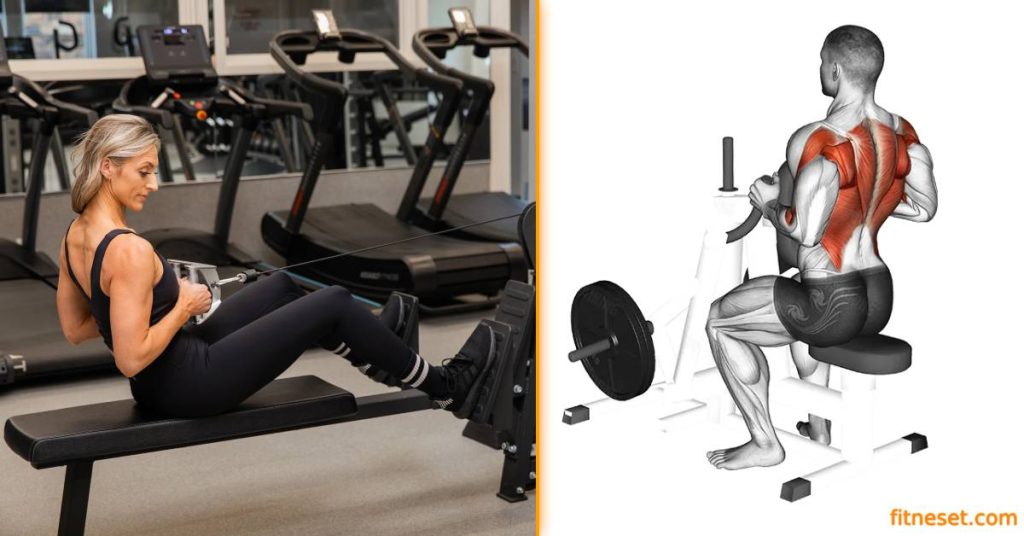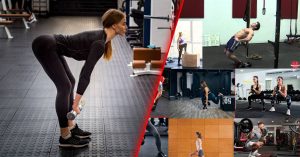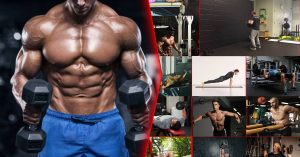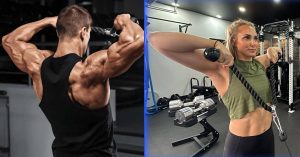Picture a gym machine that doesn’t just promise a comprehensive workout but delivers one, engaging nearly every muscle in your body. They are not just any equipment; these are the seated row machines, often overlooked yet a giant in the realm of fitness.
As we navigate through the dynamic world of fitness, the seated row machine emerges as a game-changer, offering benefits that few other machines can match. Whether you’re a regular at your local gym or someone who prefers the quiet focus of home workouts, getting to know this machine could revolutionize how you think about fitness.
This guide takes you on a deep dive into the world of seated row machines. From the sturdy seated row machine to the versatile one arm seated row machine, we cover it all, ensuring you understand every facet of this powerful equipment. So, let’s dive into the details.
Table of contents
MORE keyboard_double_arrow_down LESS keyboard_double_arrow_up
Why Should You Use Seated Row Machines?
For too long, seated row machines have been the underdogs of the gym, shadowed by the flashier cardio machines and weight benches. However, those in the know, particularly rowing athletes, have always appreciated their value. So, what’s the secret behind their effectiveness?
Seated row machines are not just another piece of gym equipment; they are your all-in-one fitness solution. Let’s break down why they deserve a spot in your workout routine:
Engages Multiple Muscle Groups
Unlike some machines that target specific areas, seated row machines offer a full-body workout. From your legs to your core, to your back and arms, every stroke works numerous muscles simultaneously.
Low Impact, High Results
Perfect for those concerned about joint health, the seated row machine delivers an intense workout without the harsh impact on your body.
Versatility
Whether you’re at a Planet Fitness, using a seated row weight machine, or mastering the one-arm seated row machine, the exercise variations are endless.
But, with so many benefits, why have seated row machines only recently started to gain the popularity they deserve? The answer lies in the growing awareness of their efficiency and the shift towards more holistic workout approaches.
As more people seek exercises that provide maximum benefits while minimizing time and effort, seated row machines have emerged from the shadows.
The Evolution of the Seated Row Machine
From their humble beginnings to becoming a staple in gyms worldwide, seated row machines have undergone significant evolution. Initially designed to mimic the rowing action on water, these machines have been refined over the years to enhance user experience and workout efficiency.
Today, they boast features like adjustable resistance, ergonomic design, and digital tracking, making them more accessible and appealing to a broad audience.
Stay tuned as we delve deeper into the mechanics of seated row machines, uncovering the techniques, settings, and workouts that will enable you to harness their full potential. The journey ahead is exciting, and the possibilities are endless. Are you ready to transform your workout and achieve the fitness results you’ve always dreamed of? The adventure begins now.
Health Benefits of Using A Seated Row Machine
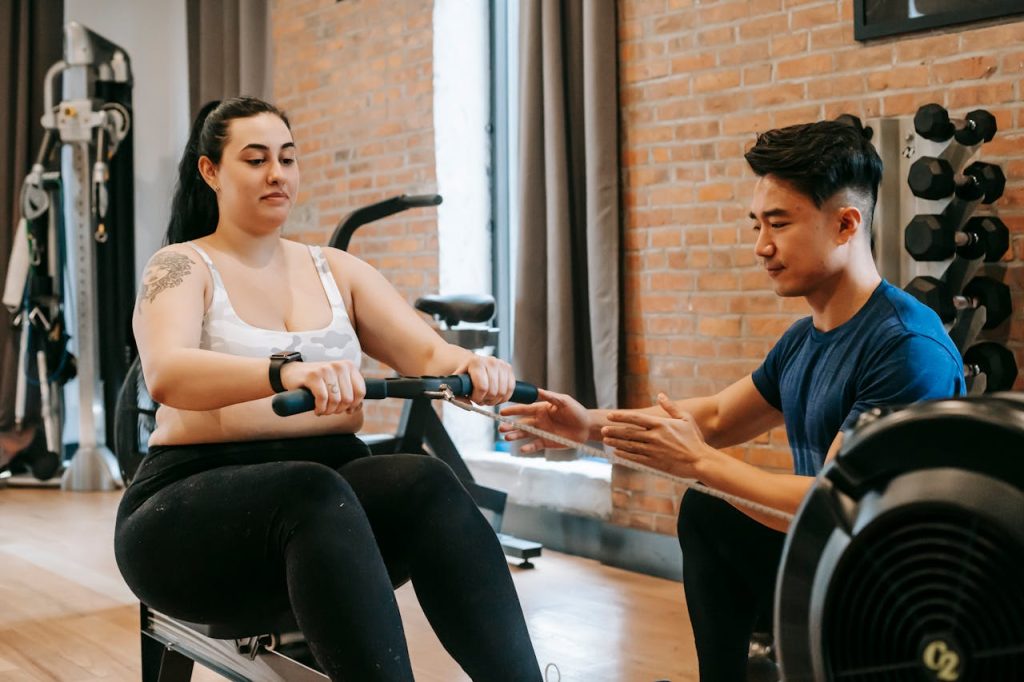
The benefits of incorporating seated row machines into your workout routine are vast and varied. Here’s a closer look at how these machines can revolutionize your health and fitness:
- Cardiovascular Health: Regular use improves heart function and blood circulation, reducing the risk of heart-related issues.
- Increased Stamina: By engaging multiple muscle groups, seated row machines help build endurance, allowing you to push your limits with each session.
- Weight Loss: High-intensity workouts on these machines are excellent for burning calories, supporting your weight loss journey.
- Low Impact: Ideal for individuals at any fitness level, the low-impact nature of rowing reduces the risk of injury and is gentle on the joints.
Proper Rowing Form
Unlocking the full benefits of the seated row machine starts with mastering the correct form. Here’s what you need to know to ensure your rowing form is on point:
Straight Back
Keeping your back straight protects your spine and allows for more efficient power transfer from your legs.
Engage Your Core
A strong core stabilizes your rowing motion, enhancing your balance and strength during each stroke.
Smooth Movements
Controlled, fluid motions ensure you’re working your muscles effectively without risking injury.
But the journey doesn’t stop with mastering form. What happens when you combine perfect form with precise technique?
Proper Rowing Technique
Proper form lays the foundation, but mastering the rowing technique propels your workouts to new heights. Let’s break down the rowing stroke into four key phases:
- Catch: Position yourself with knees bent and arms extended; this is your starting point.
- Drive: Power through your legs, engage your core, and begin pulling back with your arms.
- Finish: Extend your legs fully, lean back slightly, and pull the handle to your lower ribs.
- Recovery: Return to the starting position in a controlled movement, preparing for the next stroke.
Rowing Machine Settings & Features You Need to Know
The various settings and features of these machines are not just add-ons; they’re essential tools for tailoring your workout to meet your exact needs.
Whether you’re engaging with a seated row machine or challenging yourself on a high-end seated row weight machine, understanding how to manipulate these settings can significantly impact your workout effectiveness.
Adjusting the Damper for Resistance
The damper setting is your first step toward customization. Think of it as your personal difficulty level selector. Here’s why it’s crucial:
- By adjusting the damper, you control the resistance level, making your workout as easy or as hard as you need.
- Changing resistance can help simulate different types of rowing experiences, from gliding through calm waters to battling against a strong current.
Tracking Your Progress on the Digital Monitor
Next up is the digital monitor, a feature that turns your efforts into quantifiable data. Here’s how it changes the game:
- By providing real-time feedback on your speed, distance, and calories burned, the monitor allows you to set and achieve tangible fitness goals.
- Watching your progress unfold in real-time can be a significant motivational boost, encouraging you to push harder and go further.
Suggested Workouts on A Seated Row Machine

Armed with knowledge about the seated row machine’s settings and features, it’s time to translate theory into action. This segment unveils a treasure trove of workouts tailored to diverse fitness levels and goals, showcasing the full spectrum of what seated row machines have to offer.
High-Intensity Intervals
For those craving a heart-pumping challenge:
- The Setup: Alternate between 1 minute of intense rowing and 1 minute of rest.
- The Goal: Boost cardiovascular health and burn calories efficiently.
Endurance-Building Sessions
For the long-haul enthusiasts:
- The Plan: Maintain a steady, moderate pace for 20-30 minutes.
- The Aim: Increase stamina and endurance without overtaxing your body.
Strength and Power Workouts
Targeting muscle building and explosive power:
- The Method: Short bursts of maximum effort rowing followed by longer rest periods.
- The Purpose: Enhance muscular strength and power output.
What Do Experts Say About Seated Rowing Machines?
Experts in the field of fitness and sports science have shared their opinions on the benefits and effectiveness of using seated rowing machines in a workout routine. Here is what they say:
Dr. Stuart McGill is a leading spine biomechanics researcher with a Ph.D. in spine biomechanics. He is a Professor Emeritus at the University of Waterloo and has authored numerous studies on back health and injury prevention.
Dr. McGill often recommends rowing exercises as part of a comprehensive rehabilitation program for individuals with back issues, highlighting the benefits of strengthening the back muscles through rowing movements.
Furthermore, Tony Gentilcore is a Certified Strength and Conditioning Specialist (CSCS) and co-founder of Cressey Sports Performance. With years of experience in the fitness industry, he advocates for the inclusion of rowing exercises like those performed on seated rowing machines to enhance overall physical fitness and promote proper movement patterns.
Lastly, take a look at this Instagram post by Alice Jane where she emphasises the importance of seated rowing machines and provides tips on how you can perform it:
Final Thoughts
Imagine the strides you could make towards your fitness goals with the right strategy and understanding of seated row machines. These devices are more than mere equipment; they are a conduit to greater strength, endurance, and overall health. With the insights provided here, the path to leveraging these machines for optimal fitness results is clear.
Remember, the path to fitness excellence is paved with consistency, proper form, and the courage to push beyond your limits. Embrace the journey with seated row machines today, and embark on an adventure that promises a stronger, healthier you. The future of your fitness awaits, ripe with potential and brimming with opportunities for growth.
Key Points
- Seated row machines target multiple muscle groups, including the upper back, rhomboids, trapezius, and latissimus dorsi, offering a comprehensive upper-body workout.
- They provide a low-impact exercise option, making them suitable for individuals of all fitness levels, including those with joint concerns or recovering from injury.
- Enhancing core strength and posture is a significant benefit of regular seated row machine use, as it engages the muscles around the spine during each rep.
- The seated cable row machine is the primary equipment used for this exercise, featuring a bench, footplates, and a horizontal cable setup for varied resistance levels.
- Incorporating seated row exercises into your fitness routine can be done 4-6 times a week, allowing for flexibility in workout frequency based on individual goals and recovery needs.
- Adjusting the damper on the machine changes the resistance level, enabling users to customize the intensity of their workout to match their fitness level and goals.
- Tracking progress through the digital monitor helps motivate and guide users by providing real-time feedback on speed, distance, and calories burned.
- A variety of workouts can be performed on the seated row machine, including high-intensity intervals and endurance-building sessions, catering to different fitness objectives.
- Consistency and proper form are crucial for maximizing the benefits of seated row exercises, including improved muscle strength, cardiovascular health, and posture enhancement.
- Listening to your body and allowing for adequate rest between sessions is essential to prevent overuse injuries and ensure effective muscle recovery and growth.
FAQs
What Muscles Do the Seated Row Work?
The seated row primarily targets the muscles in your upper back, including the rhomboids and trapezius. It also significantly works the latissimus dorsi the large muscles on the outer side of the chest wall. By engaging these muscles, the seated row helps in strengthening and toning the back, contributing to better posture and muscle balance.
Is the Seated Row Machine Good for You?
Absolutely! The seated row machine is an excellent addition to your fitness regimen. It serves as an effective conditioning tool for your core by increasing workout intensity while minimizing the risk of injury.
As you pull on each rep, you strengthen the muscles around your spine, which can help improve your posture. This low-impact, high-reward exercise is suitable for individuals at all fitness levels, aiming to enhance muscle strength and cardiovascular health.
What Machine Do You Use for a Seated Row?
The seated row is typically performed on a seated cable row machine, which is a weighted horizontal cable machine equipped with a bench and footplates. This equipment may stand alone or be part of a multi-gym setup.
The seated cable row machine is versatile, allowing for a range of upper-body strength workouts that target the back, shoulders, and arms. Its design encourages proper form and supports a variety of rowing exercises, making it a staple in both home gyms and commercial fitness centers.
Is It OK to Use a Rowing Machine Every Day?
Using a rowing machine regularly can be a great way to enhance your overall fitness. It is generally safe to use a rowing machine 4-6 times a week, depending on your fitness goals and current activity level.
Incorporating short rowing sessions into your regular fitness routine offers a quick and effective burst of full-body cardio that emphasizes muscle strength and endurance. However, as with any exercise program, it’s important to listen to your body and allow adequate rest to prevent overuse injuries and ensure muscle recovery.

ABOUT THE AUTHOR
Follow Valen Steven for a dose of fitness enthusiasm, evidence-based advice, and a roadmap to achieving your health and wellness goals.
Subscribe to our Newsletter
Dive into a world of fitness and wellness with our exclusive newsletter! Sign up now and receive weekly power-packs of fitness wisdom

